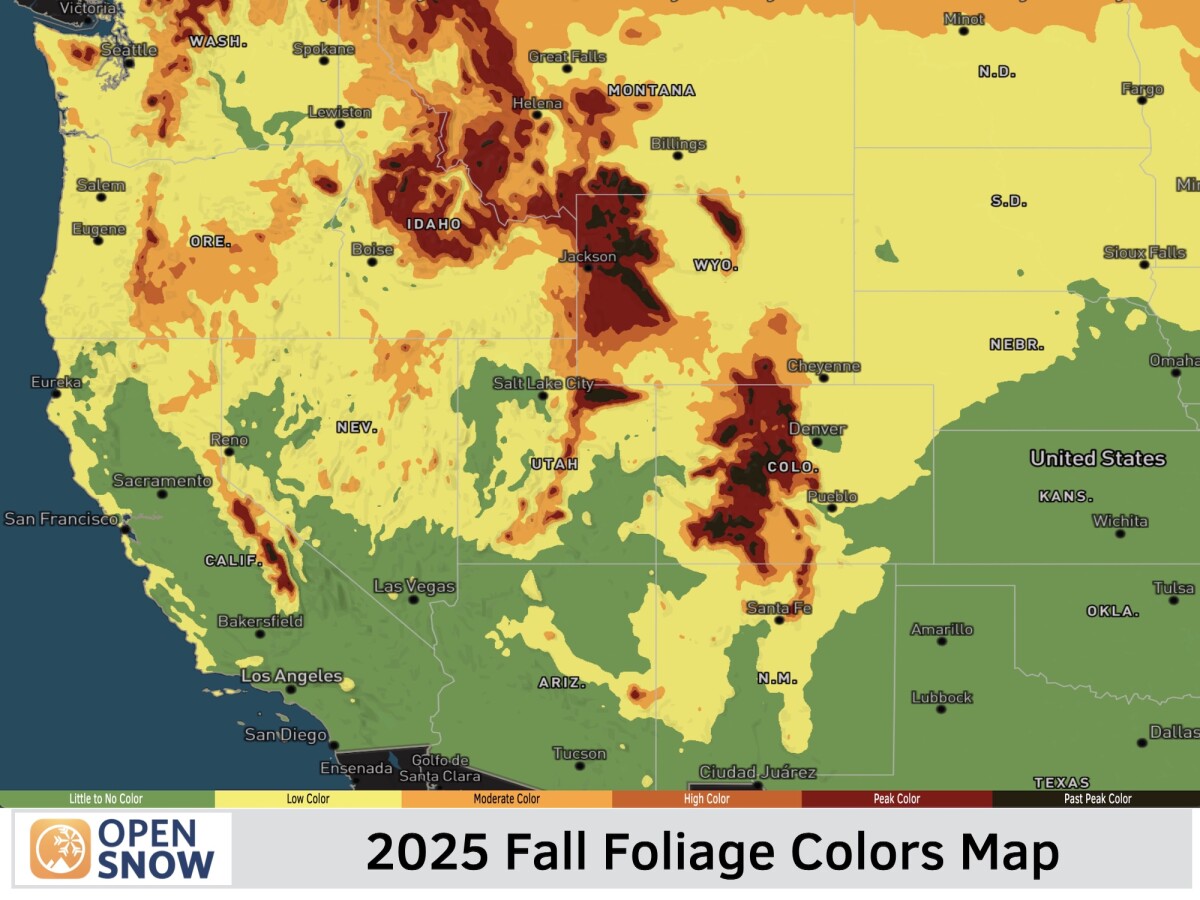News

By Luke Stone, Forecaster Posted 9 months ago October 14, 2024
How Atlantic Ocean Temps Could Impact La Nina & 2024-2025 Winter Forecast

We recently posted the 2024-2025 Winter Forecast Preview which discussed the role that La Niña will play on temperature and precipitation for the upcoming winter in North America.
To recap, La Niña means that water temperatures in the central and eastern Pacific Ocean are cooler than average, and this change in water temperatures can change weather patterns around the world. Here in North America, La Niña often creates wetter/snowier conditions along the northern part of the United States with drier conditions in the southern part of the country.
While El Niño (warmer ocean water temperatures in the Central and Eastern Pacific Ocean) and La Niña (colder ocean water temperatures in the Central and Eastern Pacific Ocean) have been studied for decades, there are fewer studies about how ocean water temperatures in the Atlantic Ocean impact wintertime rain and snow across North America.
The quick summary of the research that I will present below is that due to warm ocean water temperatures in the North Atlantic Ocean forecast for the upcoming winter, the 2024-2025 winter could be wetter (more rain and snow) for some areas compared to what we would normally expect if we only looked at La Niña in the Pacific Ocean and did not factor in ocean temperatures in the Atlantic Ocean.
What is the Atlantic Quadpole Mode?
The focus of my graduate research was how ocean water temperatures in the North Atlantic alter the typical impacts of El Niño and La Niña.
Just like the warming and cooling waters of the tropical Pacific Ocean, the water temperatures in the North Atlantic Ocean cycle between warmer and colder as well, and we call this cycle the Atlantic Quadpole Mode (AQM).
The warm phase of the ocean water temperatures in the North Atlantic, known as the warm AQM, is shown below.

The image above shows the warm AQM pattern with warmer-than-average ocean water temperatures across the northern Atlantic Ocean shown in red colors.
Why do Atlantic Ocean water temperatures matter for seasonal snowfall forecasts?
When a part of the northern Atlantic Ocean is warmer (or cooler) than average, it changes the circulation of the air above the Atlantic Ocean, and this changes the balance of atmospheric pressure in the region.
This change in air pressure around the Atlantic Ocean then changes weather patterns in other parts of the world.
In other words, the effects of the changes that happen in the Atlantic Ocean do not stay in the Atlantic Ocean but rather spread across the globe. This is similar to how El Niño and La Niña, which are changes that happen in the Pacific Ocean, spread their effects around the world.
Based on research from past seasons, we know that ocean water temperatures in the North Atlantic alter the alignment and strength of the correlation between El Niño and La Niña and winter precipitation in North America.
Using ocean water temperatures in the North Atlantic, we can:
- Provide more predictability about winter precipitation in areas of the United States that are not too far north or too far south. This middle area is where there is a low correlation between El Niño, La Niña, and the amount of rain or snow.
- Enhance our ability to forecast in all areas of the United States as we now have two predictors: Ocean temperatures in the Pacific and ocean temperatures in the Atlantic.
Below are the typical precipitation patterns associated with La Niña and El Niño during winter. Green shows areas of above-average rain and snow while brown shows areas of below-average rain and snow.

If we only look at La Niña and El Niño, then we are left with these two maps, and cannot say much about times when La Niña or El Niño is weak or non-existent (called “Neutral” conditions).
However, we now have more information as we can look at La Niña, El Niño, AND the status of ocean water temperatures in the Atlantic Ocean.
Making a forecast using both Pacific and Atlantic water temperatures
For a winter season with both El Niño and a warm AQM, that is, warmer-than-average ocean water temperatures in the Central and Eastern Pacific and the North Atlantic, we see wetter/snowier conditions push farther north throughout the western United States. Look at panel “C” below.
For a winter season with both El Niño and a cold AQM, that is, warmer-than-average ocean water temperatures in the Central Pacific and colder-than-average ocean water temperatures in the North Atlantic, we see fewer wetter/snowier areas within the Western United States. Look at panel “A” below.
For a winter season with both La Niña and a cold AQM, that is, colder-than-average ocean water temperatures in the Central Pacific and the North Atlantic, we see fewer wetter/snowier areas within the United States. Look at panel “G” below.
For a winter season with La Niña and a warm AQM, wetter/snowier areas extended farther south (panel “I” vs “H” below), yet a cold AQM increases the extent and magnitude of areas with below-average precipitation (panel “G” vs. “H”).

The image above shows precipitation patterns associated with Pacific Ocean water temperatures (La Niña, neutral, El Niño) and Atlantic Ocean water temperatures (Cold AQM, Neutral AQM, Warm AQM). Green shows areas of above-average rain and snow while brown shows areas of below-average rain and snow.
The winter 2024/2025 outlook using BOTH ENSO and AQM
Forecasting the ocean water temperatures in the North Atlantic months in advance of winter is more difficult than forecasting ocean water temperatures in the tropical Pacific Ocean, but the latest seasonal projections show warmer-than-average temperatures during this period, as you can see below.

The image above shows the forecast for ocean water temperatures for the November to January period compared to average. The red/yellow areas are warmer than average while the blue colors are cooler than average.
Looking back at past winter seasons with BOTH a cold Central Pacific Ocean (La Niña) and a warm North Atlantic Ocean (warm AQM) results in the following precipitation pattern.

The image above shows precipitation patterns associated with a La Niña and a Warm AQM, which is what we expect for the 2024-2025 winter. Green shows areas of above-average rain and snow while brown shows areas of below-average rain and snow.
If La Niña and a warm AQM continue into winter, and if past correlations continue, then we expect above-average precipitation in the Northwest and most of California, along with central/northern Utah, northern Colorado, western Wyoming, southern/central Idaho, and southwestern Montana.
Lastly, it is important to remember that both the La Niña and warm AQM precipitation patterns shown here are an average of many years, and any individual year may depart from these averages. Further, ocean water temperatures in the North Atlantic may depart from the latest forecast from the seasonal model shown above.
Thank you for reading this winter snowfall outlook based on my research into North Atlantic ocean water temperatures and their impact on wintertime precipitation patterns across the United States.
Luke Stone
Forecaster, OpenSnow
About The Author




